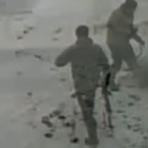All Activity
- Past hour
-
Better than roleplaying a racist...
-
- 137 replies
-
- character development
- ocg
-
(and 1 more)
Tagged with:
-
-
This photo surfaced in an archive labeled 'LS Historical Society: 1942–49'. Depicted is a weathered-era building with a bold dragon mural above the doorway. The mural’s artist remains unknown, and it’s absent from city planning diagrams or County records. Given the dragon’s scale and the unique border, some speculate it was painted to mark a gathering place for second-generation Japanese-Americans—a cultural landmark long since forgotten.
- Today
-

“Key" "Young & Rich” - “Key’s Code: Money, Power, Loyalty”
key low replied to key low's topic in Screenshots & Videos
''Linking up with an old friend, exploiting'' -
- 2,697 replies
-
- 1
-

-
- lcn
- bellantonio crime family
-
(and 1 more)
Tagged with:
-
- 2,697 replies
-
- 1
-

-
- lcn
- bellantonio crime family
-
(and 1 more)
Tagged with:
-
All the weasels got wacked except for the one who name changed ooc.
Nobody ever got away with stealing from us ooc or ic.
-
Wear Two Hats / Catch-22
-

“Key" "Young & Rich” - “Key’s Code: Money, Power, Loyalty”
key low replied to key low's topic in Screenshots & Videos
''Blood brotherhood'' -
- 493 replies
-
- 1
-

-
- nakahara-kai (小東京)
- little tokyo (小東京)
- (and 3 more)
-
all the japanese bikes in the world and SHE HAS ITALIAN FLAG ON IT!
-
Looks good gl!
-
Nice looks cool gl with it!
-
Great stuff keep it up!
-
Looks cool gl with it!
-
Nice screens keep it up and gl!
-
- 2,697 replies
-
- 3
-

-

-
- lcn
- bellantonio crime family
-
(and 1 more)
Tagged with:
-
After WWII, many Japanese-American families who returned to California faced ruin. Prewar, Japanese-Americans thrived in agriculture, small businesses, and local ethnic economies. By 1940, they ran hotels, grocery stores, farms—significant economic contributors. Post-internment, however, many had lost their farms, homes, and businesses. For example, in Los Santos, only 17.5% of Japanese-Americans returned to family businesses by the late 1940s, down from 72% before the war. The economic effects of internment were lasting. Nisei who stayed in poorer camps or areas saw 9–13% lower earnings years later, and communities such as San Fierro’s Japantown shrank dramatically due to displacement and migration. With the collapse of their economic base, many Nisei took jobs as janitors, gardeners, domestic workers—even when they had once owned businesses or farms. Poverty has climbed additionally for some in recent years, with the California Poverty Measure estimating that over 13% of residents fall below the poverty line—with housing costs factored in, the effective rate rises to over 20%, the highest in the nation. Among Asian Americans in California, approximately 23% of Asian American and Pacific Islander workers are described as "struggling with poverty"—with Japanese Americans included in that figure (~22%), particularly in low-density neighborhoods. For those living under twice the federal poverty level, food insecurity affects roughly 26.5% of low-income Japanese Americans, meaning one in four households may struggle with basic needs like groceries.
-
- 3,954 replies
-
- 1
-

-
- mc
- flintcounty
-
(and 1 more)
Tagged with:
-
reserved






.thumb.jpg.09bda654eaceda76ffeb5d108d88f971.jpg)




.thumb.png.502f4a7013603d94ceb56557b25e25c6.png)

